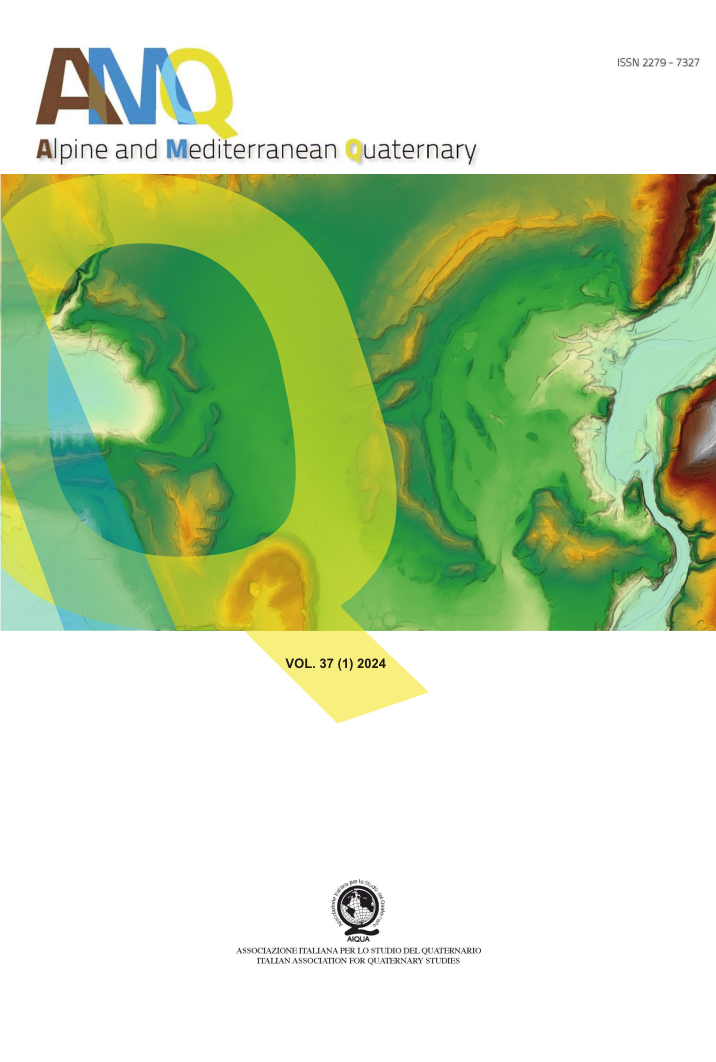Late Glacial tree-ring chronologies from Palughetto bog, Veneto Pre-Alps, Italy
Main Article Content
Abstract
A late-glacial / early-Holocene lacustrine and peat succession, with conifer macro-remains and including some palaeo-mesolithic flint artefacts, was investigated in several steps in the Palughetto intermorainic basin (Venetian Pre-Alps). Published data on the geomorphic and stratigraphic relations, 14C chronology, pollen series and archaeology allow a reconstruction of the environmental history of the basin and provide significant insights into the reforestation and human peopling of the Pre-Alps. In this dendrochronological study, we analysed 203 trunks and branches from the subfossil forest of Palughetto mire, resulting in seven groups of 34 trees, which fall in a period of 1600 years of the Bølling-Allerød Interstadial between c. 14,900-12,800 cal BP. Crossdating was facilitated by numerous decadal AMS 14C age determinations. Most of the trees were not found ‘in situ’. They fell into the lake and were preserved in the sediment. The forest mainly consisted of the species spruce (Picea abies Karst.), larch (Larix decidua Mill.), birch (Betula pubescens Erh.), poplar (Populus spec.) and willow (Salix spec.), confirming results from palynology and botanical remains analyses. Growth rates are different for each species. Spruce trees show wide rings and ‘complacent’ tree growth. Larch tree rings were smaller with higher interannual variability. The high growth rate of spruce indicates favourable growing conditions such as moderate temperatures and sufficient water supply during the vegetation period of the Bølling-Allerød in Palughetto, which is similar to the modern situation of the area.
Article Details
Issue
Section

This work is licensed under a Creative Commons Attribution-NonCommercial-NoDerivatives 4.0 International License.
The Author grants usage rights to others using an open license (Creative Commons or equivalent) allowing for immediate free access to the work and permitting any user to read, download, copy, distribute, print, search, or link to the full texts of articles, crawl them for indexing, pass them as data to software, or use them for any other lawful purpose.

